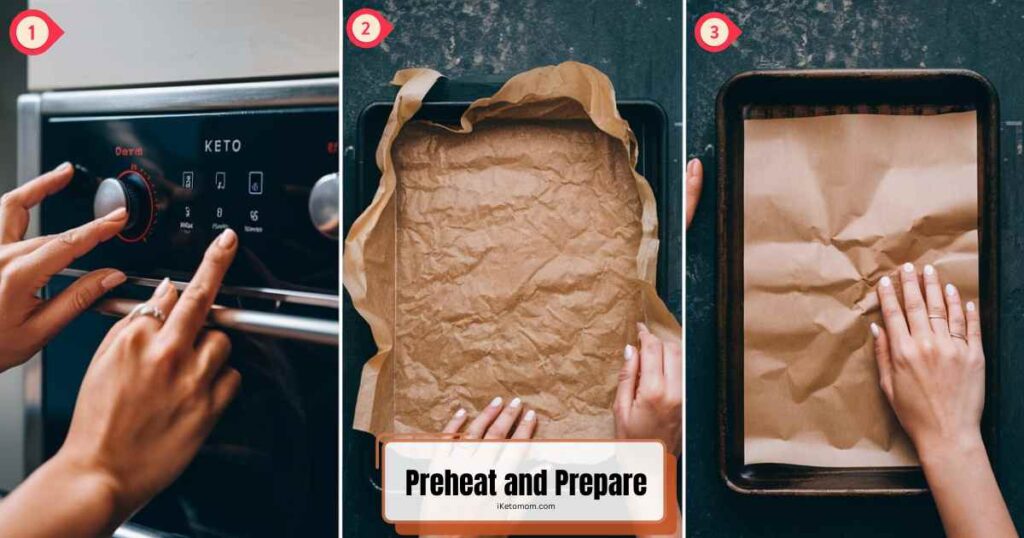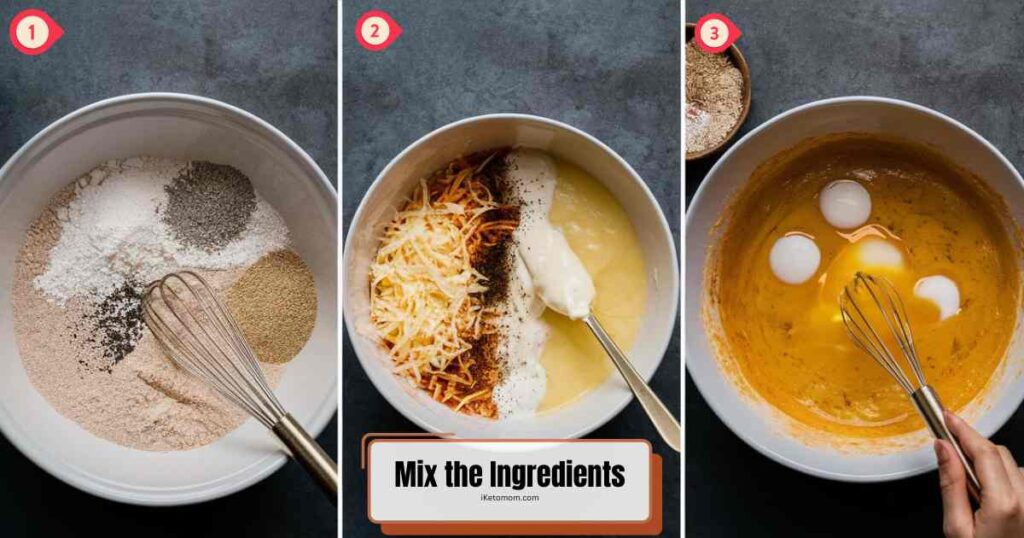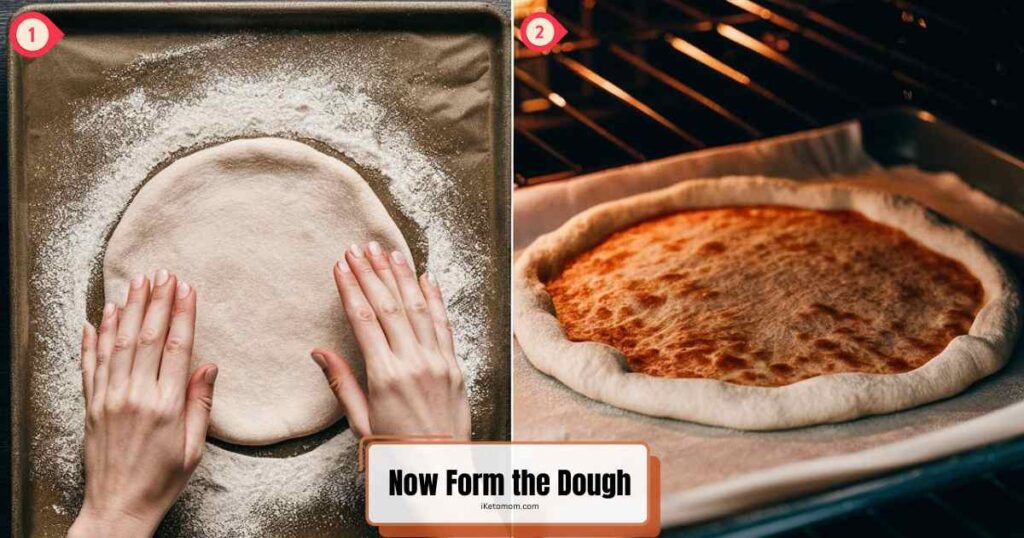Introducing Keto Pizza Crust, you’ll find that it not only meets the dietary requirements but also delivers a deliciously satisfying base for your favorite pizza toppings. Made from ingredients like almond flour, cheese, and eggs, this crust offers a delightful combination of flavors and textures. It’s an ideal option for those seeking to indulge in pizza without straying from their low-carb goals, making it a valuable addition to any keto meal plan.
In the world of ketogenic diets, finding satisfying and flavorful foods that align with low-carb principles can be a challenge. The keto pizza crust offers a perfect solution for those craving the classic comfort of pizza while adhering to a low-carb lifestyle. Traditional pizza crusts, made from wheat flour, are high in carbohydrates, which can hinder progress on a keto diet. This is where keto pizza crust shines as an excellent alternative, allowing pizza enthusiasts to enjoy their favorite dish without compromising their dietary goals.
Low-carb alternatives are crucial for anyone following a ketogenic diet, as they help maintain ketosis—the metabolic state where the body burns fat for fuel instead of carbohydrates. By choosing low-carb options, individuals can enjoy diverse foods while staying within their carb limits, making the diet more sustainable and enjoyable. The keto pizza crust is a prime example of how you can transform beloved recipes into keto-friendly versions that don’t sacrifice flavor or texture.
Keto Pizza Crust Recipe
Ingredients
Tips for Best Results

Keto Pizza Crust Recipe
Equipment
- Mixing bowls For combining ingredients.
- Measuring cups and spoons To measure out ingredients accurately.
- Baking sheet or pizza stone For baking the pizza crust.
- Parchment Paper To line the baking sheet and prevent sticking.
- Rolling Pin (optional): For flattening the dough evenly.
- Oven To bake the crust.
Ingredients
- 1½ Cup Almond Flour
- 2 Large Eggs
- ½ Cup Mozzarella Cheese
- 2 Oz Cream Cheese (optional)
- 1 Teaspoon Baking Powder
- ½ Teaspoon Garlic Powder
- ½ Teaspoon Italian Seasoning
- ¼ Teaspoon Salt
Instructions
- Preheat Oven: Set your oven to 375°F (190°C) and line a baking sheet with parchment paper.
- Combine Dry Ingredients: Mix 1 1/2 cups almond flour, 1 teaspoon baking powder, 1/2 teaspoon garlic powder, 1/2 teaspoon Italian seasoning, and 1/4 teaspoon salt in a bowl.
- Prepare Wet Mixture: Beat 2 eggs. Melt 1 1/2 cups shredded mozzarella and 2 oz softened cream cheese together, then mix with the beaten eggs.
- Form Dough: Gradually add the dry ingredients to the wet mixture, stirring until a dough forms.
- Shape and Pre-Bake: Spread the dough on the prepared baking sheet, shaping it into a crust. Bake for 10-12 minutes, until golden brown.
- Cool and Top: Let the crust cool slightly, then add your favorite toppings and bake until the cheese is melted and bubbly.
Notes
- Cheese Texture: For a smoother dough, ensure the mozzarella and cream cheese are fully melted and well combined before mixing with the eggs.
- Almond Flour Variability: Almond flour can vary in fineness. If your dough seems too dry or too wet, adjust with a bit more almond flour or a small amount of water to achieve the right consistency.
- Dough Handling: The dough can be sticky. Using parchment paper can help in shaping and transferring the crust. You can also lightly flour your hands or rolling pin with almond flour to prevent sticking.
- Pre-Baking: Make sure to pre-bake the crust until it’s just starting to turn golden brown. This helps to create a sturdier base that holds up better with toppings.
- Toppings: Be mindful of adding too many wet or heavy toppings, as they can make the crust soggy. Pre-cook any high-moisture vegetables if possible.
- Storage: If you have leftover crust, store it in an airtight container in the refrigerator for up to 3-4 days. Reheat in the oven to restore crispiness.
- Freezing: For longer storage, you can freeze the baked or unbaked crust. Wrap it well in plastic wrap and aluminum foil, and store in the freezer for up to 2 months. Thaw before baking or reheating.
- Customizations: Feel free to adjust herbs and spices according to your taste. You can add garlic, onion powder, or a pinch of chili flakes for extra flavor.
Yes, you can use coconut flour instead of almond flour in keto pizza crust, but there are some important considerations. Coconut flour is much more absorbent than almond flour, so you’ll need to use less of it—typically about one-quarter to one-third of the amount of almond flour called for in the recipe. This means that if a recipe requires 1 1/2 cups of almond flour, you’d use roughly 1/2 to 1/2 cup of coconut flour instead. Additionally, because coconut flour absorbs more moisture, you might need to increase the amount of liquid or eggs in the recipe to achieve the right dough consistency.
The texture and flavor of the crust will also change when using coconut flour. Coconut flour tends to impart a subtle coconut flavor and can result in a slightly denser, crumbly texture compared to almond flour. It’s important to mix the dough thoroughly and allow it to rest for a few minutes to help the flour fully absorb the liquids. Experimenting with small batches can help you find the right balance and adjust the recipe to your taste and texture preferences.
Is this crust suitable for those with nut allergies?
No, this keto pizza crust is not suitable for individuals with nut allergies because it uses almond flour, which is derived from almonds. Almond flour is a key ingredient in the recipe, providing the base for the crust’s texture and structure. Those with nut allergies should avoid consuming almond flour and any products containing it to prevent allergic reactions.
For a nut-free alternative, you can use seed-based flours such as sunflower seed flour or flaxseed meal. These alternatives can offer similar binding and textural properties as almond flour but without the nut content. Adjustments in the recipe may be necessary to achieve the right consistency and taste, but these substitutions can help create a delicious keto pizza crust suitable for those with nut allergies.
How do I store leftover keto pizza crust?
To store leftover keto pizza crust, first ensure it has cooled completely to room temperature. Place the crust in an airtight container or wrap it tightly in plastic wrap to prevent it from drying out. Store the container or wrapped crust in the refrigerator where it will stay fresh for up to 3-4 days.
For longer storage, you can freeze the crust. Wrap it well in plastic wrap and then in aluminum foil to protect it from freezer burn. Place the wrapped crust in a freezer-safe bag or container and store it in the freezer for up to 2 months. When ready to use, thaw the crust in the refrigerator overnight and reheat it in the oven to restore its crispiness.

I’m Priscilla Swahn, a registered dietitian with a master’s degree in nutritional sciences. With over a decade of experience in holistic nutrition, I specialize in creating delicious keto recipes to help you enjoy a healthy lifestyle. On iKetoMom, you’ll find a variety of recipes for every meal—hearty breakfasts, satisfying lunches, mouthwatering dinners, indulgent desserts, and refreshing drinks. My recipes make keto living easy and enjoyable for the whole family. Featured in EatingWell and MindBodyGreen, I also collaborate with health centers and corporate companies to share my expertise. Join me and discover the joy of keto cooking!





